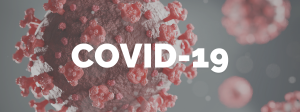
What You Need to Know About Esophageal Cancer
You might think that the esophagus is a simple organ, just a tube that connects the throat and the stomach. However, it’s quite a bit more complex. When you swallow, two types of muscles move in perfect synchronicity in a downward wave pattern (peristalsis), pushing food contents through the esophagus and into the stomach. Along the way, two sphincters, the upper esophageal sphincter and the lower esophageal sphincter, open when necessary, to allow space for food to pass through. There are also glands in the esophagus that produce lubricating mucus that prevents swallowed food from becoming stuck.
Esophageal cancer is a rare disease that occurs when cells in the esophagus become malignant. There are two main types of esophageal cancer, depending on which cells are affected: adenocarcinoma and squamous cell carcinoma. Adenocarcinoma occurs in the cells that produce mucus and squamous cell carcinoma develops from cells in the inner lining of the esophagus. There are also a few other types of esophageal cancer, but these are very rare.
Statistics
Esophageal cancer is very rare, affecting only 33.5 individuals per 1,000,000 Canadians each year.1 It is more common in males, who make up approximately 74% of cases, as well as individuals 60 years of age or older, who make up 92% of cases.1 Worldwide, most cases of esophageal cancer are squamous cell carcinoma, but in places such as Canada, the United States, and parts of Europe, adenocarcinoma is more common. In recent decades, the incidence of adenocarcinoma in Canada has been increasing, while the rate of squamous cell carcinoma has decreased.
In Canada, the five-year survival rate of esophageal cancer is about 15%, meaning that five years after diagnosis, this percentage of people with this disease are still alive.2 However, it varies depending on how far the disease has progressed. The survival rate is about 43% if the disease is caught early enough that the cancer is localized to the esophagus, 23% if the cancer has spread to nearby tissues, and 5% if it has spread throughout the body (metastasised).2
Risk Factors
The two types of esophageal cancer have different risk factors. Chronic gastroesophageal reflux disease (GERD), Barrett’s esophagus, and obesity all increase your risk of developing esophageal adenocarcinoma. The increasing prevalence of these conditions in Canada might explain why the rate of adenocarcinoma diagnoses are also growing here. Smoking cigarettes and drinking alcohol, as well as consuming very hot (greater than 65°C) beverages,3 can increase your risk of developing squamous cell carcinoma.
Symptoms
In the initial stages of the disease, you might not have any symptoms. As the cancer worsens, a tumour can grow large enough to cause problems. Difficulty swallowing (dysphagia) is common, as is pain in your throat, chest, or back, and especially pain after swallowing. Other symptoms include nausea, vomiting, loss of appetite, weight loss, chronic cough, a hoarse voice, and fatigue.
However, none of these symptoms on their own, or even in combination, mean that you have esophageal cancer, as they are present in many common and benign diseases and disorders. If you experience any of these symptoms and are concerned, then speak with your physician.
Screening
For certain types of cancers, there are routine screening tests that look for it in those who are at an increased risk, such as colonoscopy for colorectal cancer and mammography for breast cancer. These screening methods are helpful because they often detect cancer when it is in its early, treatable, stages. Regrettably, according to the Canadian Task Force on Preventative Health Care, there is no benefit in screening individuals who are at high risk of developing esophageal adenocarcinoma.4 Instead, if your physician suspects that you have esophageal cancer after conducting a physical exam and considering your symptoms, your medical history, and your family history, then they will use diagnostic techniques to establish if you have it and what stage it is if you do. Some tests your physician might run include endoscopy, x-ray, ultrasound, CT scan, blood tests, and biopsy.
Treatments
Historically, the treatment options for esophageal cancer were very limited. Care typically involved surgery, chemotherapy, and/or radiation, along with medications to manage symptoms and make an individual more comfortable in terminal cases.
In the past decade, a variety of new medications have become available. One class of drugs, known as immunotherapies, work with your immune system to destroy cancer cells. This includes the medications pembrolizumab (Keytruda®) and nivolumab (Opdivo®). Our immune systems produce T cells, which fight diseases throughout the body. However, cancer cells might use something known as the PD-1 pathway to “hide” from T cells. These immunotherapies work by blocking this pathway, so that the T cells can fight the cancer.
Outlook
Esophageal cancer is a devastating diagnosis, with a grim prognosis. However, early detection significantly improves your ability to recover from the disease and further research on innovative screening methods might help improve outcomes. Treatments also continue to advance with more effective mechanisms to target the cancer, increase survival, and/or improve your quality of life. Having a support system is also helpful for managing the physical and mental toll of esophageal cancer. If you have any new symptoms that you are concerned about, speak with your physician.
Patient Advocacy
The GI Society is always advocating on behalf of patients for a wide range of gastrointestinal conditions, including cancers of the digestive tract. We recently conducted a survey on esophageal cancer, together with two other patient groups, to better understand the experiences of individuals who have experienced, or were the caretaker of someone who experienced, this disease. Together, we also submitted to CADTH (pCODR) and INESSS to advocate for public coverage of the medication Keytruda®. We do this as a matter of consistent practice for all medications under review in Canada for the GI tract and liver. We never receive any funding from the pharmaceutical industry for this practice; it is strictly a benefit for the patients who we serve.















